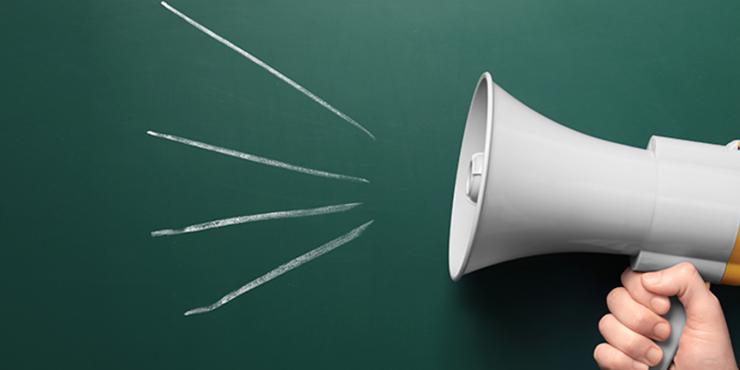U.S. Supreme Court: Belief in Patent's Invalidity Not a Defense to Induced Infringement
In a 6-2 decision, the U.S. Supreme Court held that a defendant’s good-faith belief in the invalidity of a patent is not a defense to a claim for inducing infringement of the patent.
Under 35 U.S.C. § 271(b), “[w]hoever actively induces infringement of a patent shall be liable as an infringer.” Commil USA, LLC v. Cisco Systems, Inc. is the second time in recent years that the Court considered the scope of activities that constitute “actively induc[ing] infringement.” In Global-Tech Appliances, Inc. v. SEB S.A., 563 U.S. ___ (2011), the Court clarified that the plaintiff alleging induced infringement must show that the defendant knew, or was willfully blind to, two facts: (1) the existence of the patent and (2) that the induced acts constituted infringement.[1] Thus, a defendant’s good-faith belief that the induced acts do not constitute infringement is a defense to an allegation of induced infringement.
Relying on Global-Tech, Cisco successfully argued to the Court of Appeals for the Federal Circuit that a good-faith belief in the invalidity of a patent also negates the specific intent required to prove induced infringement. The Federal Circuit drew no “distinction between a good-faith belief of invalidity and a good-faith belief of non-infringement”; Judge Newman dissented stating that infringement “does not depend on the belief of the accused infringer that it might succeed in invalidating a patent.”
The Supreme Court has sided with Commil, overturning the Federal Circuit and adopting Judge Newman’s view. The Court held that “because infringement and validity are separate issues under the Act, belief regarding validity cannot negate the scienter required under §271(b).” The Court also found that the presumption of validity, codified in section 282 of the Patent Act, “would be lessened to a drastic degree” if a defendant’s “belief in invalidity were a defense to induced infringement.” In addition, the Court supported its conclusion by noting that invalidity is a defense to liability, and not a defense to infringement. Finally, the Court considered the practical implications of upholding the Federal Circuit’s rule, suggesting that an accused infringer has many avenues to challenge the validity of the patent and that providing the invalidity defense to inducement would increase cost and multiply the issues in litigation.
Justice Scalia filed a dissent, joined by Chief Justice Roberts, adopting the view propounded by Cisco that “[b]ecause only valid patents can be infringed, anyone with a good-faith belief in a patent’s invalidity necessarily believes the patent cannot be infringed” and, thus, cannot “induce actions he knows will infringe it.” The dissent took issue with each of the majority’s supporting arguments—noting that the practical impact of the rule is inconsequential, but if it were, a rule that “increases the in terrorem power of patent trolls” is not clearly preferential.
Notwithstanding the Court’s internal colloquy about the weight accorded to practical implications, a few likely effects of Commil are:
- More Post-Grant Challenges: As the Court noted, inter partes review and ex parte reexamination provide fertile opportunities for challenging the validity of patents based on prior art—without the presumption of validity. In addition, post-grant review allows the challenger to assert any ground of invalidity, including patent ineligible subject matter, indefiniteness, and lack of enablement or written description support. The lack of an invalidity-based defense to induced infringement is likely to tip the scales further in favor of mounting an invalidity challenge at the Patent Office, particularly when a putative challenger may also be obligated to indemnify customers as potential direct infringers.
- Continued Use of Noninfringement Opinions: If there was any doubt after Global-Tech, Commil clarifies that a good-faith belief in a noninfringement defense negates a claim of induced infringement or contributory infringement. When forming a noninfringement belief, it is important to develop a well-reasoned claim construction and consider both literal infringement and the doctrine of equivalents. N.B., willful infringement may be negated by a reasonable (i.e., not objectively baseless) opinion that the asserted patent was not infringed or invalid.
- Not Much Solace for Non-Practicing Entities: The Commil majority and dissenting opinions epitomize the current dialogue about nonpracticing entities. Against the backdrop of pending legislation, supported by the Obama Administration, that targets nonpracticing entities, the majority decision devotes an entire section to demonstrating that the Court is not oblivious to companies that “use patents as a sword to go after defendants for money, even when their claims are frivolous”—companies that the dissent unabashedly calls “patent trolls” that exercise “in terrorem power.”
The solution, according to the majority, is to “stress that district courts have the authority and responsibility to ensure frivolous cases are dissuaded” by exercising their discretion to sanction attorneys and award attorneys’ fees to prevailing parties, citing its Octane Fitness, LLC v. ICON Health & Fitness, Inc. decision from last term, which lowered the bar for obtaining attorneys’ fees under 35 U.S.C. § 285. Perhaps because Commil is a nonpracticing entity, the Court appears defensive in drawing attention to the work it did last term to advance the law against the interests of nonpracticing entities.
For questions on the Commil decision, or any other patent issue or concern, please contact a member of Pierce Atwood's Intellectual Property and Technology Practice Group.
[1] Commil, supported by the U.S. Government as amicus curiae, argued that Global-Tech only requires the plaintiff to prove that the defendant knew of the patent. But the Court’s Commil decision rejects that argument, requiring “proof the defendant knew the acts were infringing.”
